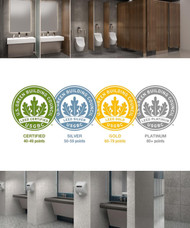LEED Credits and Restroom Fixtures: What You Need to Know
Sustainable building isn’t just a trend, it’s become a baseline expectation in today’s commercial projects. Whether you’re managing a new build or upgrading an existing facility, aligning with LEED (Leadership in Energy and Environmental Design) standards can add measurable value.
But achieving LEED points isn’t just about solar panels and insulation. The right restroom fixtures play a direct role in meeting water efficiency goals and securing credits. And the details matter. Flow rates, fixture types, and certification labels all impact whether your selections contribute toward compliance - or fall short.
This post breaks down what procurement teams, contractors, and facility managers need to know about restroom fixture selection for LEED-aligned projects, and how Berl’s Commercial Supply can help streamline the process from spec to install.
What Is LEED Certification?
LEED, or Leadership in Energy and Environmental Design, is a widely recognized certification system developed by the U.S. Green Building Council. It sets benchmarks for designing, constructing, and operating buildings that are energy-efficient, resource-conscious, and healthy for occupants.
LEED certification works on a points-based structure, with credits awarded across categories like water efficiency, energy use, materials selection, and indoor environmental quality. The more credits a project earns, the higher the certification level it can achieve - from Certified up to Silver, Gold, or Platinum.
For procurement professionals and specifiers, the key takeaway is this: each product and system you choose contributes to that credit c\nount. Restroom fixtures may seem like a small part of the overall build, but they directly impact several LEED categories, particularly water use reduction. That means specifying the right toilet, faucet, or flush valve isn’t just about meeting code - it can help the project hit its sustainability goals.
Where Restroom Fixtures Fit In: LEED Categories That Apply
Restroom fixtures directly support multiple LEED credit categories, especially when it comes to water conservation and material selection. Understanding how these categories work makes it easier to specify products that contribute to certification without overcomplicating the process.
Water Efficiency (WE) Credit: Indoor Water Use Reduction
This is where restroom fixtures have the most direct impact. LEED awards points for reducing indoor potable water use by at least 20% below a baseline established by standard fixture flow and flush rates. Low-flow toilets, urinals, faucets, and other water-saving technologies all factor into the calculation. Products labeled through EPA’s WaterSense program often meet or exceed LEED thresholds.
Materials and Resources (MR) Credit: Construction Waste Management
If you're replacing existing fixtures in a retrofit or tenant improvement project, recycling or responsibly disposing of removed materials can contribute toward MR credits. Partnering with vendors who prioritize packaging minimalism and recyclable materials also supports this category.
Indoor Environmental Quality (EQ) Credit: Low-Emitting Materials
While not every restroom fixture is subject to this credit, adhesives, sealants, and caulking used in installation may qualify. Selecting low-VOC (volatile organic compound) products helps improve air quality and aligns with LEED’s focus on occupant health and well-being.
Fixtures may not touch every LEED category, but the ones they do support are critical for reaching certification thresholds. The key is to match each component to both the performance spec and the LEED credit it’s intended to satisfy - something Berl’s team is well-equipped to assist with.
Key Fixture Types That Can Earn LEED Points
When it comes to restroom fixtures and LEED compliance, not all products are created equal. The right selections can support water reduction goals, improve hygiene, and deliver long-term savings. Below are the fixture types most commonly used to secure points under the Indoor Water Use Reduction credit.
Low-Flow Toilets and Urinals
These are among the most straightforward ways to cut water usage. LEED sets a baseline flush rate of 1.6 gallons per flush (gpf) for toilets and 1.0 gpf for urinals. To contribute to LEED credits, toilets typically need to operate at 1.28 gpf or lower, and urinals at 0.5 gpf or less. Some high-efficiency models use as little as 0.125 gpf.
Look for units certified by the EPA’s WaterSense program - a third-party designation that confirms compliance with strict performance and efficiency standards. Berl’s offers a range of WaterSense-labeled models that meet commercial durability needs without compromising on water savings.
Sensor-Activated Faucets and Flush Valves
Sensor-activated fixtures reduce water waste from users leaving taps running or holding flush valves down longer than necessary. They’re also easier to clean and maintain, making them a smart choice for high-traffic public restrooms.
In LEED calculations, flow rates matter. Sensor faucets need to operate at 0.5 gallons per minute (gpm) or lower to count toward water use reduction credits. Berl’s can help ensure the units you specify meet these requirements and integrate with existing electrical or battery-powered systems.
Metering Faucets and Dual-Flush Systems
Metering faucets dispense a set amount of water per use, which helps with water budgeting and consistency in usage. They’re especially useful in schools, stadiums, and other environments where user behavior is unpredictable.
Dual-flush toilets offer two flush options - typically around 0.8 gpf for liquid waste and 1.28 gpf for solids. These systems balance water savings with functionality, and when specified correctly, can make a significant contribution toward LEED credits.
What to Look for When Specifying Fixtures
Not every low-flow fixture is built to perform in a commercial environment. When LEED credits are on the line, it’s not just about hitting flow-rate targets, it’s about choosing products that will last, meet compliance standards, and make sense for the people using them day in and day out.
Here’s what to prioritize when reviewing specifications:
1. Performance and Durability
Flow rates shouldn’t come at the expense of functionality. Low-flow fixtures must still clear the bowl, flush reliably, and stand up to heavy traffic.
2. Verified Certifications
Look for EPA WaterSense labels on toilets, urinals, and faucets. This certification confirms the product has been independently tested for both water efficiency and performance. For wall-hung or ADA-compliant applications, ensure fixtures meet local building code and accessibility standards as well.
3. Integration and Compatibility
Fixtures need to work as a system. Berl’s team can help match valves, carriers, and fixtures to ensure proper pairing and avoid common install issues that could jeopardize LEED credit eligibility.
4. Vandal Resistance and Maintenance Access
In schools, transit hubs, and public-facing facilities, fixture durability and ease of maintenance are just as important as water savings. Features like tamper-proof sensors, concealed hardware, and top-access cartridges can make a difference in long-term usability.
Common Pitfalls: When Fixtures Don’t Deliver
Even with the best intentions, projects can lose valuable LEED points due to fixture missteps. The difference often comes down to how well product specs are aligned with both performance expectations and LEED documentation requirements. Here are a few of the most common issues we see:
1. Incomplete or Incorrect Submittals
LEED documentation is precise. Submittals that don’t clearly show flow rates, certifications, or WaterSense compliance can lead to rejected credits.
2. Overlooking Installation Details
Sensor-activated and low-flow fixtures often require specific installation parameters to function correctly. Improper settings, battery issues, or skipped calibration can undercut the fixture’s actual performance.
3. Going for “Green” Without Thinking Long-Term
Not all water-saving fixtures are built for high-traffic, high-abuse environments. Choosing residential-grade units for commercial settings might check the box on paper, but leads to premature failures in the field.
How Can Hand Dryers Contribute to LEED Certification?
Given that hand dryers are so much better for the environment than using paper towels, it has always been a pet peeve of ours that there is not a specific LEED category for using hand dryers. However, hand dryers can contribute to LEED credits by improving energy efficiency, reducing waste, and supporting sustainable material sourcing. Here’s how they fit into LEED certification:
Energy and Atmosphere (EA) Credit: Optimize Energy Performance – High-efficiency hand dryers, such as those using low-wattage motors or no-heat drying, can help reduce overall building energy consumption, contributing to EA Credit 1.
Materials and Resources (MR) Credit: Building Product Disclosure and Optimization – Some hand dryers contain recycled materials or have Environmental Product Declarations (EPDs), which can support MR credits for responsible material sourcing.
Indoor Environmental Quality (EQ) Credit: Low-Emitting Materials – Hand dryers eliminate the need for paper towels, which can reduce waste and improve indoor air quality by minimizing volatile organic compounds (VOCs) from adhesives and packaging.
Innovation (IN) Credit: Sustainable Practices – Some projects may earn Innovation credits for implementing high-speed, energy-efficient hand dryers that significantly reduce environmental impact compared to traditional drying methods.
A Smarter Path to LEED Points Starts at the Restroom
Water efficiency doesn’t have to be complicated - and with the right restroom fixtures, it can be one of the most straightforward ways to earn LEED credits. The key is selecting products that meet both performance expectations and documentation requirements, then making sure they’re integrated properly into your system and space.
Berl’s offers more than just access to compliant products. We bring hands-on category knowledge, responsive support, and a deep understanding of what commercial-grade fixtures need to deliver in the real world. Whether you’re aiming for LEED certification or just building smarter, more sustainable facilities, our team is here to help you make confident, informed choices.

